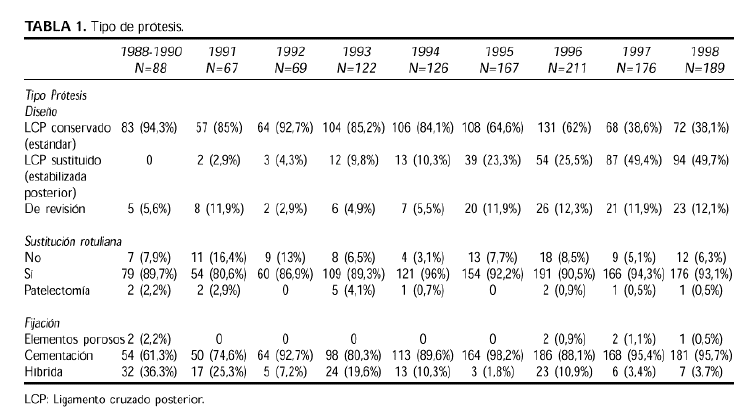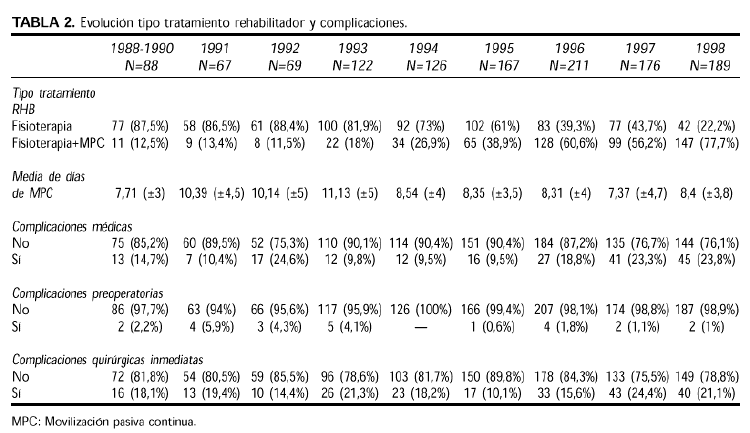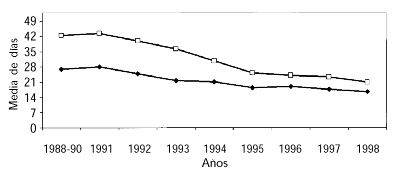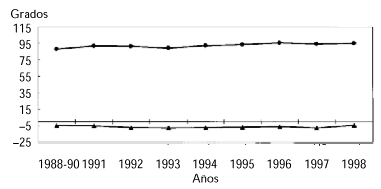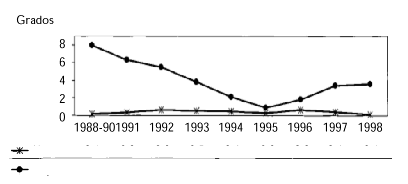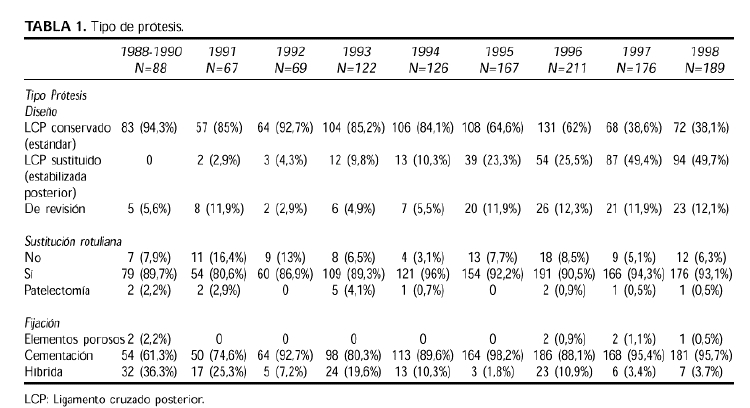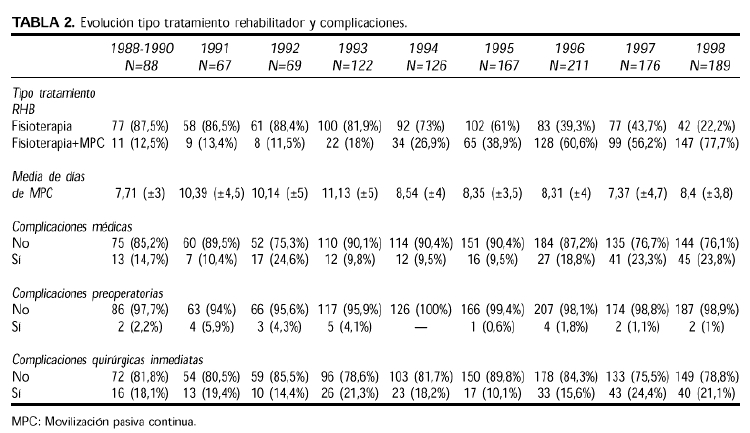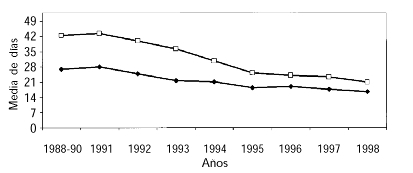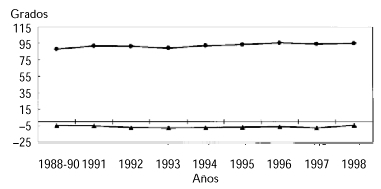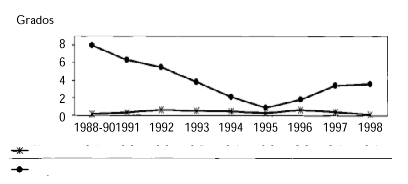Journal Information
Vol. 34. Issue 5.
Pages 347-353 (May 2000)
Vol. 34. Issue 5.
Pages 347-353 (May 2000)
Prótesis total de rodilla. Evolución del tratamiento rehabilitador intrahospitalario durante el decenio 1988-1998
Total knee prosthesis. Evolution of the intra-hospital rehabilitation treatment during the decade of 1988-1998.
Visits
4446
This item has received
Article information
Objetivo: Realizar un análisis descriptivo de la evolución del tratamiento rehabilitador intrahospitalario tras la artroplastia de sustitución de rodilla en nuestra sección durante el último decenio. Pacientes y métodos: Se ha realizado un estudio descriptivo que incluye 1.050 pacientes intervenidos de prótesis total de rodilla por el Servicio de Cirugía Ortopédica y Traumatología de nuestro hospital en el período comprendido entre 1988 y 1998. Posteriormente fueron trasladados al Servicio de Rehabilitación para realizar tratamiento rehabilitador en régimen de hospitalización. Resultados: La media de edad de los pacientes ha ido aumentando de 66,5 a 69,7 años, manteniéndose en el tiempo un mayor porcentaje de mujeres intervenidas, con un elevado índice medio de masa corporal. El 94,9% de los pacientes han sido intervenidos por presentar gonartrosis. La estancia hospitalaria ha ido disminuyendo durante este decenio desde una media de 42,5 (±16,3) días en el hospital y 26,9 (±13,4) días en rehabilitación, hasta una media de 20,9 (±8,5) días en el hospital y de 16,5 (±4,9) días en rehabilitación. El diseño de las prótesis se ha ido modificando y en la actualidad se utilizan con mayor frecuencia la estabilizada posterior cementada con recambio patelar. En el programa de tratamiento rehabilitador, se ha universalizado el uso del sistema de movilización pasiva continua de la rodilla como coadyuvante de la fisioterapia. El balance articular medio en flexión al alta hospitalaria se mantiene sobre 92º, el de extensión sobre -6º y el eje mecánico de alineación del miembro se mantiene en valores normales. El balance muscular medio al alta hospitalaria es de tres. Finalmente el 75% de los pacientes no presenta ninguna complicación médica ni quirúrgica en el postoperatorio inmediato.
Palabras clave:
Prótesis total de rodilla
Tratamiento rehabilitador
Estancia hospitalaria
Objective: Perform a descriptive analysis of the evolution of the intrahospital rehabilitation treatment after knee substitution arthroplasty in our section during the last decade. Patients and methods: A descriptive study of 1.050 patients operated on for total knee prosthesis by the Orthopedic Surgery and Traumatology Service of our hospital in the period from 1988 to 1998 was carried out. After, the patients were transferred to the Rehabilitation Service for rehabilitation treatment as out-patients. Results: During the study, the mean age of the patients went from 66.5 to 69.7 years, there being a greater percentage of women who underwent surgery, with a high mean body mass index. 94.9% of the patients were operated on due to gonarthrosis. During this decade, the hospital stay decreased from a mean of 42.5 (±16.3) days in the hospital and 26.9 (±13.4) days in rehabilitation until a mean of 20.9 (±8.5) days in the hospital and 16.55 (±4.9) days in rehabilitation. The design of the prostheses has been undergoing changes during this period and at present, the posterior stabilized prosthesis cemented with patellar replacement is used more frequently. In the rehabilitation treatment program, the use of the continuous passive mobilization system has become universal as a coadjutant of physiotherapy. The mean joint balance in flexion on hospital discharge is maintained above 92°, that of extension above -6° and the mechanical axis of alignment of the limb is maintained at normal values. The mean muscular balance on hospital discharge is 3. Finally, 75% of the patients do not present any medical or surgical complication in the immediate post-operative period.
Keywords:
Total knee prosthesis
Rehabilitation treatment
Hospital sojourn
These are the options to access the full texts of the publication Rehabilitación
Subscriber
Subscribe
Purchase
Contact
Phone for subscriptions and reporting of errors
From Monday to Friday from 9 a.m. to 6 p.m. (GMT + 1) except for the months of July and August which will be from 9 a.m. to 3 p.m.
Calls from Spain
932 415 960
Calls from outside Spain
+34 932 415 960
E-mail






